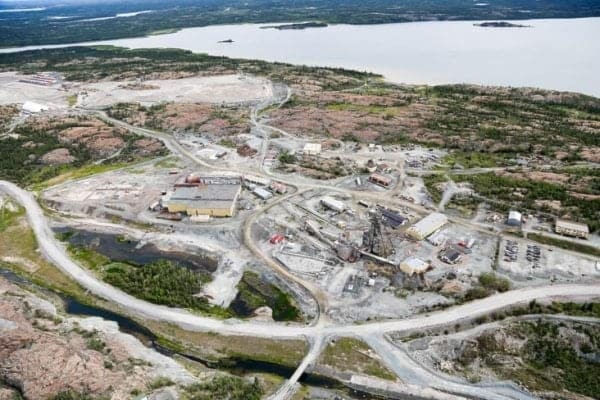The Giant Mine Project team is promising plenty of lucrative contracts for local businesses once the next phase of cleanup at the mine site begins.
Aaron Braumberger, project team engagement manager with the Department of Crown-Indigenous Relations and Northern Affairs Canada, talked up the approximately $600 million in contract work that lay ahead while meeting with city council Monday and how his team plans to dole out contracts so local companies can prepare for them.

"There are going to be lots of opportunities for contractors and individuals to benefit from our project," he said.
“It is important (community partners) co-ordinate so that we aren't stepping on each others' toes."
The years between 2021 and 2026 are considered to be a key period of the remediation project when most contracts will be given out to businesses to fill labour demand at the mine site, he said.
Because the federal department does not have a northern business policy to ensure a certain amount of local firms get a certain amount of contracts, it is working with Parsons – the U.S.-based construction management hired to co-ordinate the cleanup, the city and businesses to ensure they are well informed of services needed well ahead of time.
The project team is set to apply for a water licence with the Mackenzie Valley Land and Water Board on April 1. Braumberger said the hope is to be successful in August 2020 so that the team can begin the next phase of remediation which is expected to be complete by 2030.
During those years, there were be several projects that will include quarrying, demolition of the Giant Mine town site, underground stabilization, constructing a landfill, creating a channel to re-orient Baker Creek, soils and open pit remediation, surface water management, creating tailings containment areas, building water treatment and outfall systems and hazardous waste removal.
The number of contracts is undetermined at this point, however, Parsons and the Giant Mine team are to decide how many will be necessary and advertise them for local businesses well in advance, Braumberger said.
“There will be six or eight years of good opportunity for people to provide employment and for local contractors to benefit from the project with contracts,” he said, adding that work will gradually cease by 2030, after which the focus will shift to long-term care and maintenance of the site.
The challenge for the project team will be packaging contracts so that they are size appropriate for local businesses while being able to manage issuing the entire number of contracts available, he said.
“We want to make sure contracts are sized appropriately so that local businesses can participate,” he said. “Issuing five or six contracts in excess of $30 million means not everybody can play that.
“We will be looking at each contract and what the market will allow and then will determine based on that what size of contracts will be issued and the number of contracts.”
Matt Belliveau, executive director of the NWT and Nunavut Construction Association, said similar to GNWT capital planning, local businesses like to have information about projects “well in advance” as they may face stiffer competition from outside corporations and businesses from down south.
Belliveau said communication between Parsons and the federal government with local businesses has been positive so far.
For example, Parsons held an Industry Day in November where about 100 businesses met at the Explorer Hotel to network and learn some details of the upcoming remediation project.
“Such events generate interest from industry and small companies because they get a chance to see the technical details, timelines, schedules of when work is to go out to tender and then get prepared,” Belliveau explained.
“It is also a networking opportunity with other companies as construction often involves small companies in big supply chains working with contractors and sub-contractors and sub-contractors of sub-contractors.”
The construction association is hosting a Parsons presentation about upcoming Giant Mine project work during a regular board meeting, Feb. 13.
Crunching the numbers
Braumberger also discussed how the team is compiling statistics to provide information about who is working at the site.
Between 2006 and 2017, $356 million in contracts have been spent on Giant Mine remediation work, with $169 million of that going to Indigenous businesses. Braumberger also provided statistics that showed that between 2009 and 2017, 56 per cent of the entire workforce was represented by Northern employees, with 15 percent being of Indigenous origin.
Braumberger said with Parsons, the project team is aiming to increase transparency for local private industry by providing statistics concerning the workforce and sharing information about potential contracts well in advance of when work needs to be completed.
Braumberger said a number of residents and organizations have been asking for statistics concerning demographics, such as the number of women who work at the site and from which band members Indigenous workers may hail.
Much of that information is still being compiled and will be provided through various communications outlets, including newsletters and the Parsons website at a later date.
